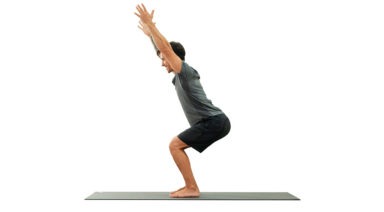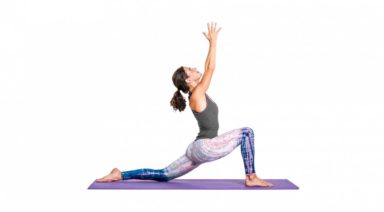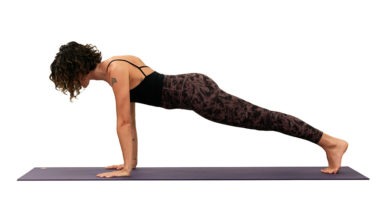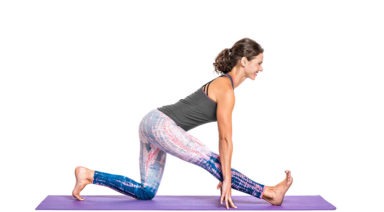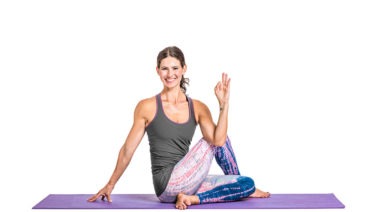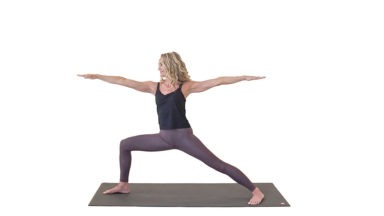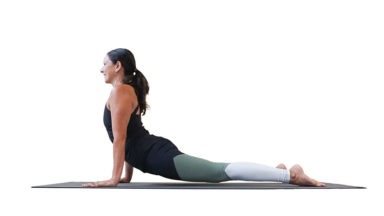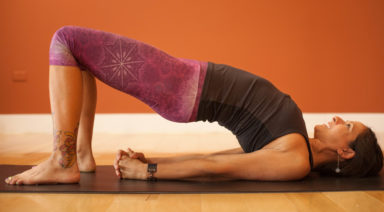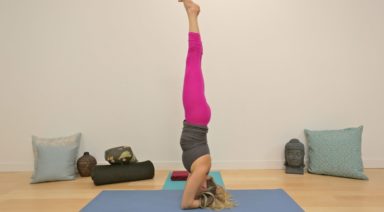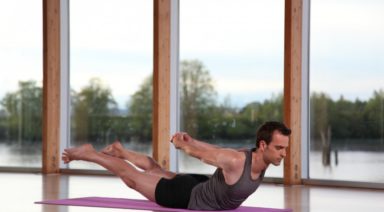Carpal Tunnel and Yoga
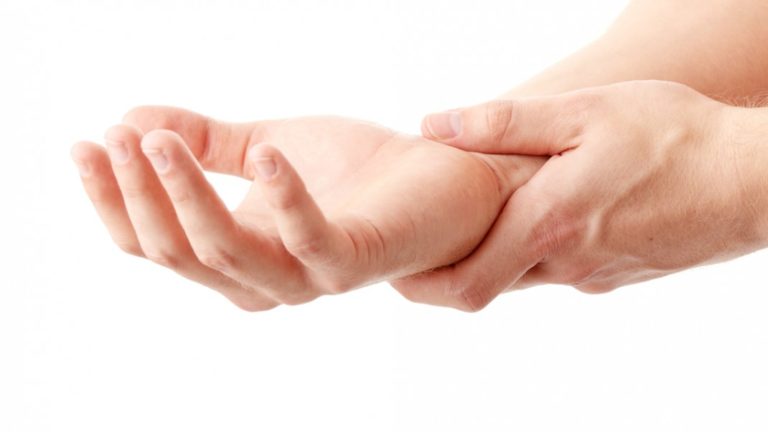
Knowing where your carpal tunnel is and its function is important for those doing yoga and for those with occupations requiring repetitive loading of the hands and forearms. Without this knowledge, you may be causing damage to this important canal without realizing it. Many people can recognize the symptoms of carpal tunnel syndrome, but identifying the risk factors is much more valuable. In order to do this, you must understand what the carpal tunnel is and what its function is.
What is Carpal Tunnel Syndrome?
The carpal tunnel actually is a tunnel on the palmar side of your wrist. This tunnel houses our forearm flexor tendons as well as our median nerve. When the space available for the median nerve is compromised, carpal tunnel syndrome symptoms appear. These symptoms can include pain, numbness, tingling, weakness, or even burning into the majority of the palm of your hand, palmar side of your index to pinkie fingers as well as the tips of the back side of the same fingers.
How Do We Get Carpal Tunnel Syndrome?
Inflammation
Each of our tendons is encased in a tendinous sheath known as synovium. When our tendons are irritated from overuse, the synovium becomes inflamed. This inflammation decreases the area of the carpal tunnel allocated for the median nerve.
Position
The position of the wrist can also decrease the space available for the carpal tunnel; this can happen through excessive flexion or extension of the wrist.
Compression
The last way the median nerve can be affected is through direct compression over the carpal tunnel.
Examples of the Above Reasons for Carpal Tunnel Syndrome
Inflammation
It has been proven that repetitive forceful contractions such as factory work or over-gripping a mouse or even a kitchen knife can lead to synovium inflammation and subsequent carpal tunnel syndrome.
Position
Let’s tie this to yoga; when you are in upward dog or plank for that matter, are your shoulders over your wrists? If your shoulders are in front of your wrists, your wrists are in too much extension and this will lead to decreased space for the median nerve over time.
Excessive wrist flexion is not seen in yoga, but perhaps you sit at a desk that is too low for you and your wrists are continually flexed to accomplish your typing tasks. Perhaps you slept with your wrists fully flexed only to wake up in the middle of the night with numb hands? If you do, remember that your median nerve is essentially being compressed and therefore causing your symptoms.
Compression
This is a very common cause of carpal tunnel syndrome in yoga as most people do not know how to properly place their hands on the ground in poses such as upward and downward facing dog pose. Look at the palm of your hand and draw a line from the tip of your middle finger to the crease of your wrist; now do the same from your thumb to the crease of your wrist. Where these two lines intersect is the location of your carpal tunnel. Place your hand on a flat surface and draw the meaty portions of the palm of your hand towards each other to create an arch at your carpal tunnel. Create this arch while distinctly planting each of your fingers into the ground instead of just resting on your carpal tunnel while in poses such as upward and downward dog; this will protect your carpal tunnel.
How Yoga Can Help Carpal Tunnel Syndrome?
Evidence exists in the medical research community that yoga can be an effective method for treating carpal tunnel syndrome. A study written up in the Journal of the American Medical Association showed yoga to me more effective than splinting in the management of carpal tunnel syndrome. Often, in such studies, the poses are modified to better suit the subjects with considerable symptoms.
The idea behind yoga helping is that it can floss the median nerve through the carpal tunnel to help mobilize the nerve; stretching may relieve compression on the carpal tunnel; improved joint posture could diminish intermittent compression on the nerve; the effects of blood flow restriction on the median nerve could also be improved with increased blood flow; and possibly yoga could decrease the risk of double crush nerve entrapment symptoms related to nerve entrapments closer to the neck or armpit.
Take Home Points
Through avoiding synovial sheath inflammation, excessive wrist flexion or extension, and compression of the carpal tunnel, you should be able to dodge carpal tunnel syndrome. There are a few other risk factors that play into this condition such as diabetes, obesity, pregnancy, hypothyroidism, arthritis, and trauma. Therefore, we should make a concerted effort to avoid the risk factors that are within our control. If you DO have carpal tunnel syndrome, check in with your health care practitioner to determine if yoga could be helpful for you! Be sure to be mindful of your wrists on your mat; wrists certainly are important in our lives so keep them as healthy as you can!
Click the following link for additional research information on yoga for CTS.
How to Avoid Wrist Compression in Yoga
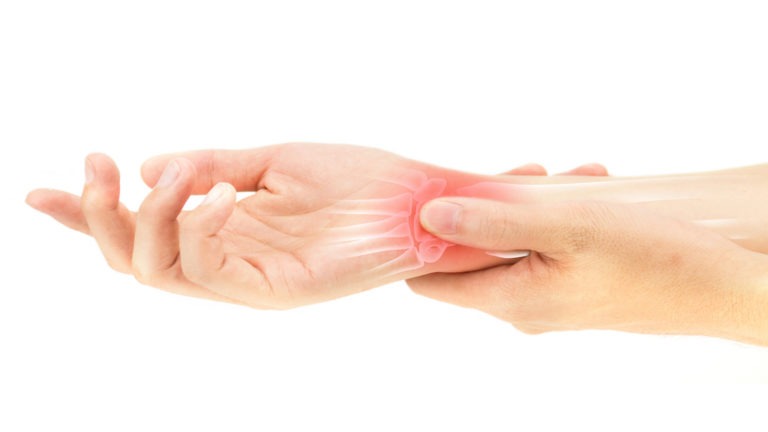
Most of us don’t give much thought to our wrists – until they start aching, that is. If your job keeps you tied to a keyboard all day, you might experience repetitive stress injuries to your wrists. Labor-intensive jobs can also result in wrist compression and discomfort, especially if you’re carrying heavy objects. To stay on the mat and keep the pain away, use these tips for healthier, more stable wrist joints.
Tips to avoid compression
- When you do weight-bearing yoga poses, keep your wrists as far apart as your shoulders. You’ll create a straight line that allows all of your muscles and joints to support one another. You’ll find it easier to make controlled movements without relying on your wrist or shoulder joints to pick up the slack.
- On the mat, spread your fingers and press the pads of your fingers into the material. It might feel strange at first, but you’re helping to distribute the weight and support your wrists. If you’re facing forward, your middle fingers should point ahead of you.
- You might find yourself neglecting your thumb. It’s easy to do, but your thumb can actually help you find balance and strength. Press the side of it into the mat so it stabilizes your wrist during weight-bearing poses. Again, you might feel awkward at first, but practice will make this technique second nature.
- Start with simple yoga poses that allow you to focus on your body and what it’s telling you. Don’t try more advanced poses until you have the hand position down. If you’re struggling to perform the actual pose, try modified poses so you’re not putting your body through too much stress. For instance, do downward-facing dog against a wall instead of on the mat.






